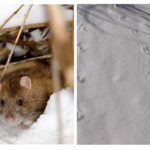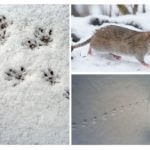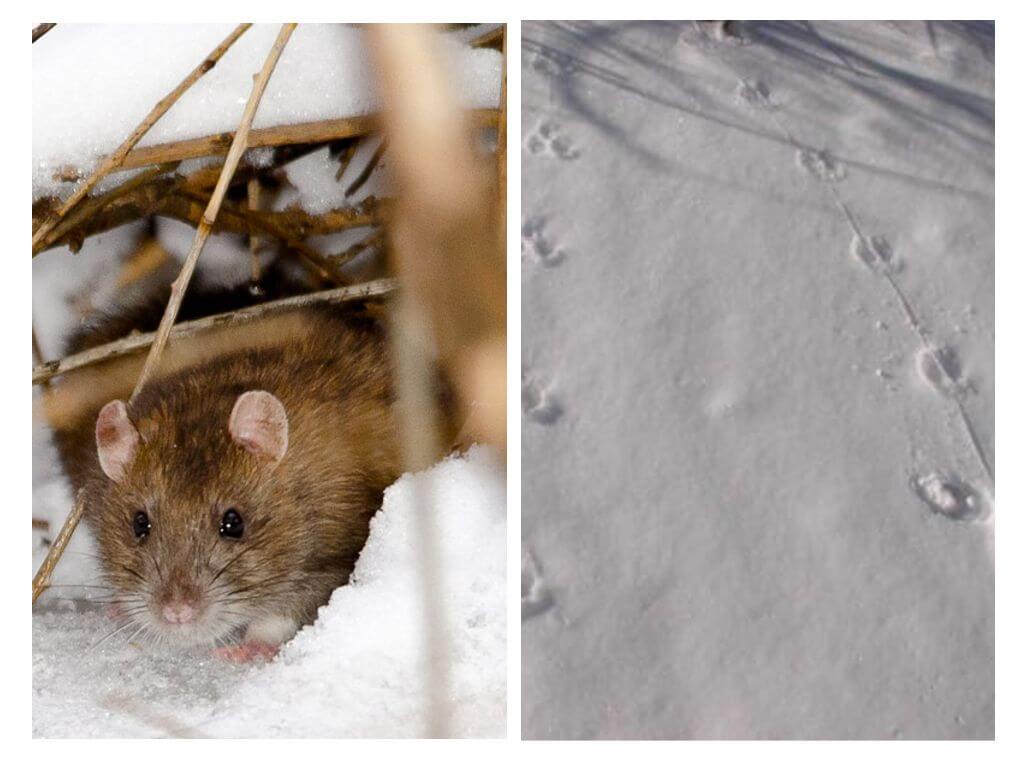What do rat tracks look like in the snow
- Rat in winter
- Traces of rats in the snow
Rats are dangerous mammals. The neighborhood with them is fraught with damage of products, electrical wiring and even building materials. Rodents without difficulty gnaw through foam plastic, wooden structures, encroach rats on insulationconcrete Identify the place of their settlements is not always possible. By appearance of rats It is easy to learn, but these animals are distinguished by caution, intelligence and lead a secretive lifestyle. Traces of a rat in the snow have obvious differences from other small animals and it is possible to determine the originator of the prints. Tracing can be a real help in finding nests, and also useful for hunters in rats.
Paw structure
To learn to recognize traces of rodents in the snow, it is worth a little to remember the zoology. The pelvic and pectoral limbs in the rat are five-fingered. But on the hand of the thoracic forepaws, the thumb is reduced and represents a short stump. Therefore, it is usually considered that the thumb of the tailed animal is absent. Considering the rat marks, one should take into account the fact of missing fingers.
Phalanges are separated by leathery membranes. Wool on the soles and palms not. Occasionally they may be covered with a rare down. The limbs are strong and muscular, well developed, which allows you to gain decent speed while running and jump well.
What do the paw prints look like in the snow
The way the tracks of a rat look depends on the season, its speed, and type. Most common rat species - this is pasyuk, gray rat extruded throughout the European part black rat. In the spring and autumn, it is rather difficult to consider prints on the surface, unless the rodent got into the paint, any other soiling material, or performed its exercise on wet soil after rain.The rat leaves the most distinct marks in the winter after the snow has fallen.
If the pasyuk slowly mince, does not run away from anyone, then we can consider that the front prints of the rat's paws are four-fingered, the gaps between the fingers are rather large, which makes them seem to be slightly splayed. The size of the track is approximately 2x1.5 cm. The rear imprints are much larger than 2x2 cm, five-fingered. Photos of traces of a rat in the snow clearly demonstrate what prints remain after a mammal.
A slowly moving individual in the snow will leave behind a thin chain. If it runs away, the distance between the prints greatly increases and can be up to half a meter, due to the length of the jump. Occasionally you can see subtle touches from long tail rats.
On a note!
Traces of small rodents such as forest mice, voles less distinct and close to each other. In Pasyuk paws pressed against the surfaces with greater force, making their prints clear, but due to the nature of the movement, the interval between them is longer.
If you are lucky, repeating the route of a rodent along its paw prints, a nest will be found.Usually shelters are located under the fallen leaves, in places sprinkled with all sorts of unnecessary things, trash. The entrance to the hole in diameter of about 5 cm. Making sure that this is a living nest is simple enough. Put a folded newspaper in it and leave for a day. If we have the next day, the paper will be crumpled, nibbled, then we can safely conclude that life in the hole is in full swing and take measures to expel or destroy rats.









